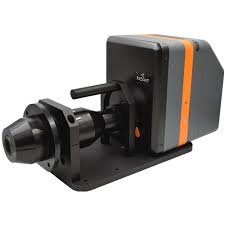In today’s world of advanced optical testing and display analysis, precision is everything. That’s where a conoscope lens comes in. This highly specialized lens system is used to observe angular light distributions, making it an essential tool for evaluating optical properties in various industries.
In this article, you’ll learn what a conoscope lens is, how it works, where it’s used, and the key advantages it offers.
What Is a Conoscope Lens?
A conoscope lens is a type of detection lens designed to analyze angular light patterns emitted from a source or reflected from a surface. It captures the full angular field of light and projects it onto a camera sensor or screen, offering a complete visual map of light directions.
This lens is widely used in optical metrology and display technology due to its ability to provide accurate and high-resolution angular measurements.
How Does a Conoscope Lens Work?
The working principle of a conoscope lens is based on Fourier optics. It takes parallel rays from each point on an object and redirects them to a single point on the image plane. This creates a “conoscopic” image that displays the angular distribution of light intensity.
These angular patterns help engineers assess properties like:
- Brightness uniformity
- Polarization
- Viewing angle performance
- Optical defects
Main Applications of Conoscope Lenses
1. LCD & OLED Display Testing
In display manufacturing, conoscope lenses are used to test viewing angles, color shift, and brightness consistency. Their high precision ensures each panel meets quality standards.
2. Birefringence Measurement
Conoscope imaging is used to examine birefringent materials, such as optical films or biological samples. The lens reveals stress patterns and optical anisotropy that are invisible to the naked eye.
3. AR/VR Device Development
For augmented and virtual reality optics, maintaining accurate angular resolution is vital. A conoscope lens helps verify lens alignment and image projection performance.
4. Research and Optical Labs
In universities and R&D environments, conoscope lenses are used for optical testing, wavefront analysis, and educational demonstrations in Fourier optics.
Benefits of Using a Conoscope Lens
- High Angular Resolution: Captures detailed angle-resolved light data.
- Non-Destructive Testing: Inspects without damaging samples.
- Compact Design: Easily integrates into lab or production setups.
- Versatile Use: Compatible with both transmission and reflection mode imaging.
- Real-Time Results: Enables instant visual analysis of light fields.
Types of Conoscope Lenses Available
- Telecentric Conoscope Lens – Offers precise collimation for lab-grade applications.
- Compact Conoscope Modules – Ideal for space-limited devices like AR displays.
- Customized Lenses – Tailored to specific wavelengths or testing needs.
Each application may require a different lens setup, depending on sensor size, working distance, and required field of view.
Conclusion
A conoscope lens is a critical tool for industries where optical quality and angular measurements matter. From testing LCD panels to evaluating birefringent materials and optimizing AR displays, these lenses provide unmatched clarity and precision.
If you’re looking for cutting-edge testing performance, explore our premium conoscope lens collection today and see the difference in light, angle, and clarity.
